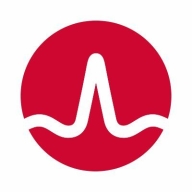


Find out what your peers are saying about BMC, Broadcom, JAMS Software and others in Workload Automation.
| Product | Market Share (%) |
|---|---|
| AutoSys Workload Automation | 10.2% |
| Stonebranch | 4.7% |
| Tidal by Redwood | 4.7% |
| Other | 80.4% |



| Company Size | Count |
|---|---|
| Small Business | 13 |
| Midsize Enterprise | 5 |
| Large Enterprise | 77 |
| Company Size | Count |
|---|---|
| Small Business | 1 |
| Midsize Enterprise | 5 |
| Large Enterprise | 22 |
| Company Size | Count |
|---|---|
| Small Business | 3 |
| Midsize Enterprise | 6 |
| Large Enterprise | 38 |
AutoSys Workload Automation efficiently manages complex workloads across platforms, offering high availability and seamless platform integration. Its reliability and scalability are valued for enterprise-level automation, enhancing job management and reducing manual effort with robust scheduling and advanced security.
AutoSys Workload Automation is known for its user-friendly capabilities, effectively handling cross-platform job scheduling with mainframe integration. It supports high availability, ensuring reliable performance for critical operations. Despite enhancements needed in its GUI and integration capabilities, AutoSys remains effective for batch processing, file transfers, ETL, and managing dependencies across servers and applications. Improvements are suggested for deployment complexity and monitoring features. More effective licensing and scalability solutions, along with modern subscription models and cloud integration, could address cost and automation barriers.
What are AutoSys Workload Automation's key features?In industries like banking, insurance, and retail, AutoSys Workload Automation facilitates 24/7 automated job execution, ensuring smooth task automation. It allows companies to manage enterprise workloads effectively, catering to batch processing, file transfers, and handling job dependencies in a consistent manner.
Stonebranch automates enterprise-level workload and task scheduling across platforms like Linux, Windows, and mainframe, managing thousands of daily tasks for improved efficiency and visibility.
Stonebranch enables organizations to streamline job scheduling by replacing older systems with a robust solution that automates complex workflows, batch processing, and secure file transfers. Its compatibility with multiple platforms and enhanced visibility aid teams in efficiently managing business processes, database interactions, and IT workflows. Equipped with a Universal Controller and Agent, it provides seamless integration across diverse systems, empowering users with greater control over their tasks. While it fosters digital transformation, there are opportunities for enhancements in areas like graphical workflow overviews and API functionality.
What features does Stonebranch offer?Organizations in industries such as finance and healthcare implement Stonebranch for its ability to automate complex processes, manage mainframe and distributed environments, and securely transfer sensitive data. Its platform-agnostic nature caters to the demanding needs of these industries, providing a reliable backbone for essential operations.
Tidal Software is a leading provider of enterprise workload automation solutions that orchestrate the execution of complex workflows across systems, applications and IT environments. With a comprehensive portfolio of products and services, Tidal optimizes mission-critical business processes, increases IT cost efficiencies and satisfies legal and regulatory compliance requirements. Hundreds of customers around the world count on Tidal for modernizing their workload automation and driving their digital transformation. Tidal Software is headquartered in Chicago with offices in Houston, London, Minsk, Belarus and Chennai, India. For more information, visit tidalsoftware.com.